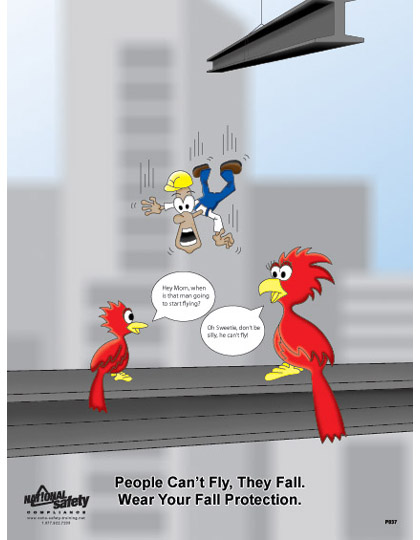Anything that has to do with guns of any type makes me nervous! In the field of construction, nail guns have taken the place of hammers, in many instances. The Occupational Safety and Health Administration (OSHA) and the National Institute for Occupational Safety and Health (NIOSH) have issued a nail gun safety guide (Nail Gun Safety – A Guide for Construction Contractors), that details practical steps to prevent injuries, including use of tools with sequential triggers, training prior to use, and use of appropriate protective equipment, such as safety eye protection.
Nail guns are used to drive nails into wood, roofing, or other types of material. They can be driven by compressed air (pneumatic), highly flammable gases such as butane or propane, electromagnetism, or, for powder-actuated tools, a small explosive charge. Work-related nail gun injuries are responsible for approximately 37,000 emergency room visits annually. Many construction workers use nail guns every day. The tool is easy to operate and increases productivity, but injuries may occur as a result of unintended nail discharge, nails that bounce off a hard surface, or miss the work piece and become airborne. Disabling the safety features of the gun is another cause of injury. Prevention of injury is possible if contractors take steps such as using full-sequential trigger nail guns.
Treating nail gun wounds costs at least $338 million per year nationally in emergency medical care, rehabilitation, and workers’ compensation, according to the U.S. Consumer Product Safety Commission. Foot and hand injuries are the most common. Because all kinds of nail guns can be dangerous, safety precautions similar to those for firearms are usually recommended for their use. For safety, nail guns are designed to be used with the muzzle touching the target. Unless they are modified, they are not effective as projectile weapons.
A common firing mechanism is the dual-action contact-trip trigger, requiring that the manual trigger and nose contact element both be depressed for a nail to be discharged. Contact triggers allow the gun to fire unintended nails if the nose hits the wood surface or a previously placed nail following recoil. Touch tip (contact) triggers are susceptible to this double firing. Acute injury rates are twice as high among users of tools with contact triggers. When the trigger is depressed on the contact-trip style of nail gun, it will fire every time its nose comes into contact with a surface, whether that surface is a human body or construction material.
The sequential-trip trigger, which is safer, requires the nose contact to be depressed before the manual trigger, rather than simultaneously with the trigger. Using a sequential-trip trigger type of nail gun could prevent approximately 65% to 69% of injuries from contact-trip tools, as reported by the Centers for Disease Control. The sequential-trip design may be a little slower, but it is much safer.
Once again, as with all other occupations that are hazardous, training on safe operating procedures and the use of the correct PPE is important and should be mandatory. Manufacturer’s tool labels and operating manuals should be followed. Safety glasses with side shields should be worn, and safety features of the nail gun should never be modified. The guarding standards of OSHA should be complied with. Watch for coworkers and never point a nail gun at anyone. Remember: both operator and coworkers are at risk. Eyes, hands and fingers are especially susceptible to injury from a nail gun.
I hope I have “driven” home the fact that all power tools are wonderful to speed up work duties but carry their share of risks or injuries. Be careful and work safely!
